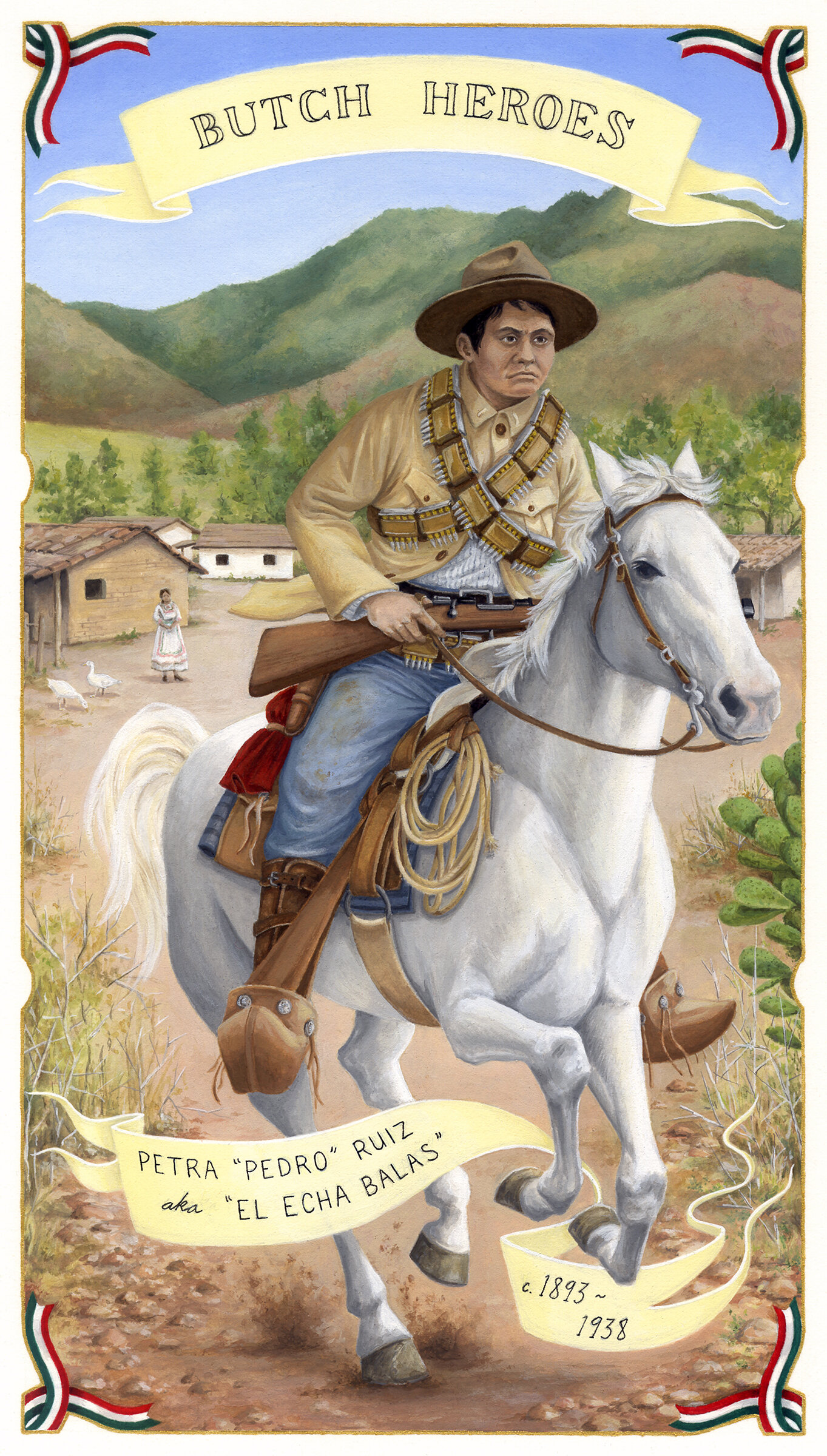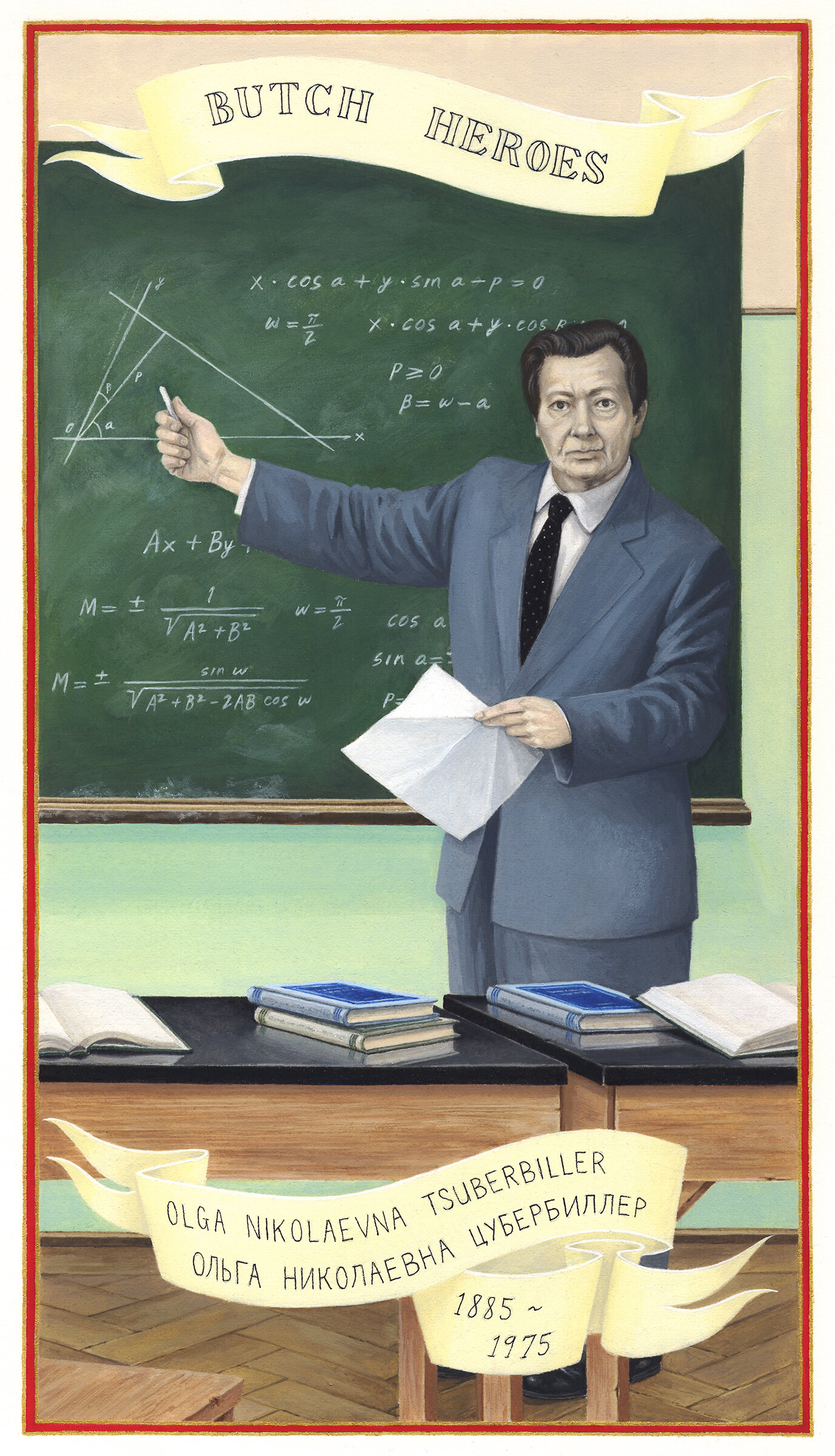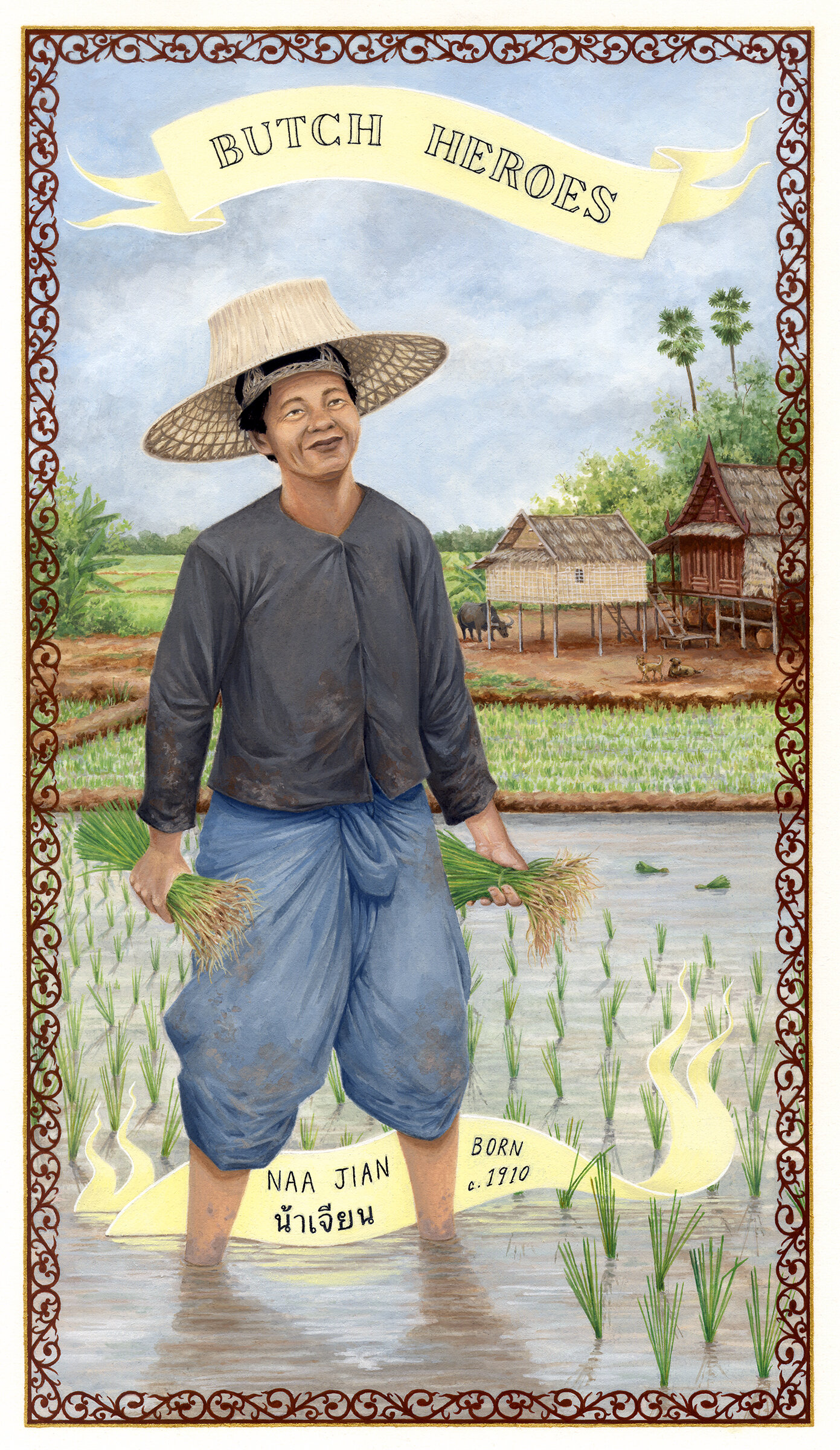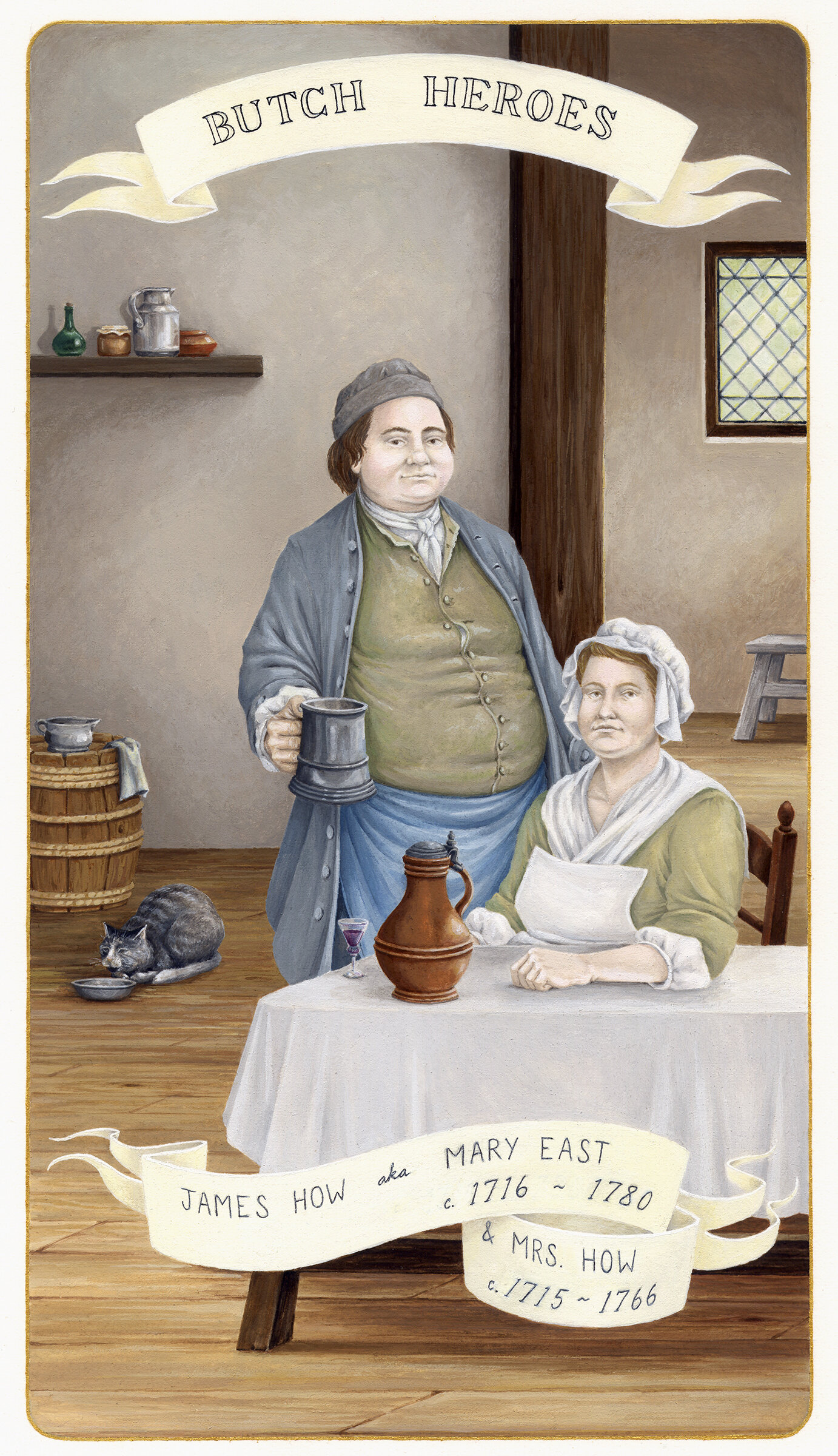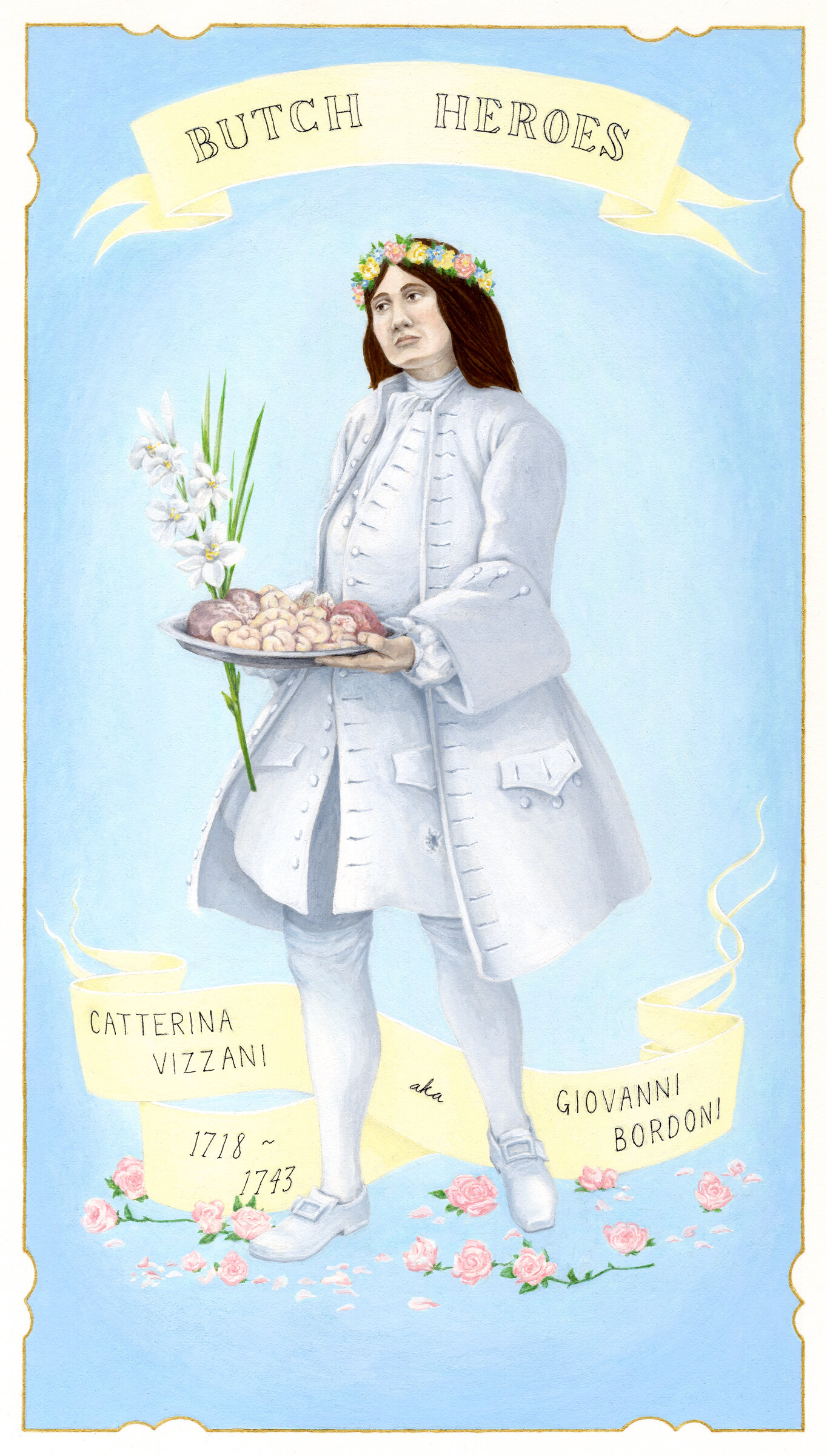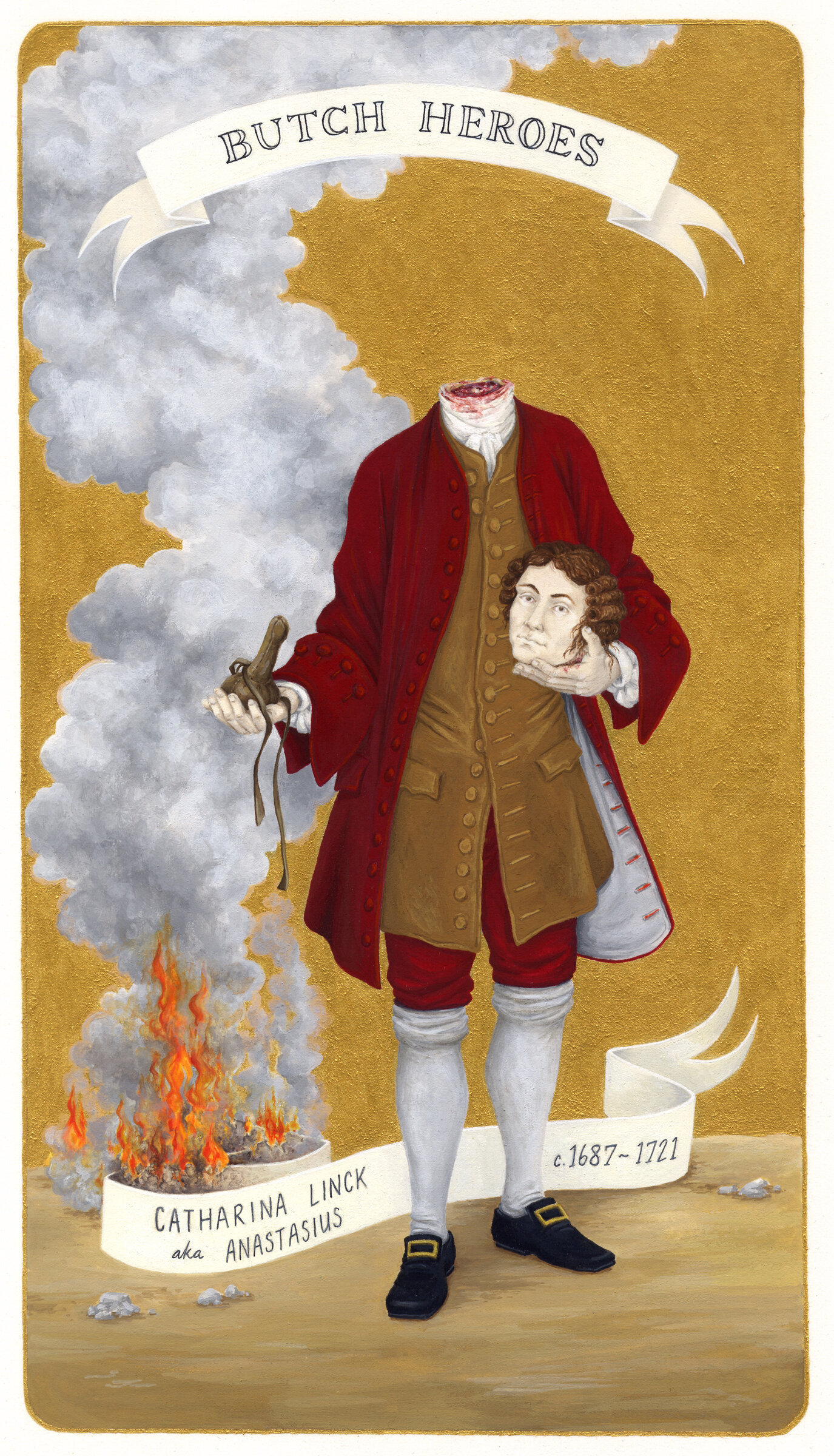Ria Brodell
Butch Heroes
We are pleased to exhibiting Ria Brodell’s series, Butch Heroes. Brodell, an artist based in Boston, self-described as “culturally Catholic” creates work which addresses issues of gender, sexuality, and religion throughout history and in contemporary culture. An earlier series, Handsome and Holy, were self-portraits and vignettes which explored the “ideal man” representing an unfulfilled and fanciful version of self. The Butch Heroes project, begun in 2010, traces these gender issues in a different era…beginning in the middle ages.
How did queer people live in the past? How did they present themselves? How did they navigate societal norms? We can find the answers to these questions in the 21 exquisitely rendered gouache paintings which document the lives of people “who were assigned female at birth, who had documented relationships with women, and whose gender presentation was more masculine than feminine.” Brodell selected people of diverse backgrounds from various geographical parts of the world and used their narratives to establish their place in the project…all subjects were born before or around the turn of the 20th century.
Brodell did extensive research to insure that every visual detail was historically accurate: architecture, tools, clothing, etc., layering each portrait with the symbolism and history of the period. The proportions of the drawings are the same format of the Catholic Holy Card, “a format that is a perfect (subversive) way to present the lives of people who were long forgotten and abused during their life time, especially because so many of them were accused of ‘mocking God and His order’ or deceiving their fellow Christians.”
Brodell chose the term Butch because of its dual nature: it has been slung as an insult and used as a congratulatory recognition of strength. It has a history within the LGBTQI community and is familiar to the cisgender, heterosexual community.
In addition to the traditional associations of being masculine in appearance or actions, I choose to use Butch Heroes to indicate people who were strong or brave in the way they lived their lives and challenged their societies strict gender roles. -Ria Brodell

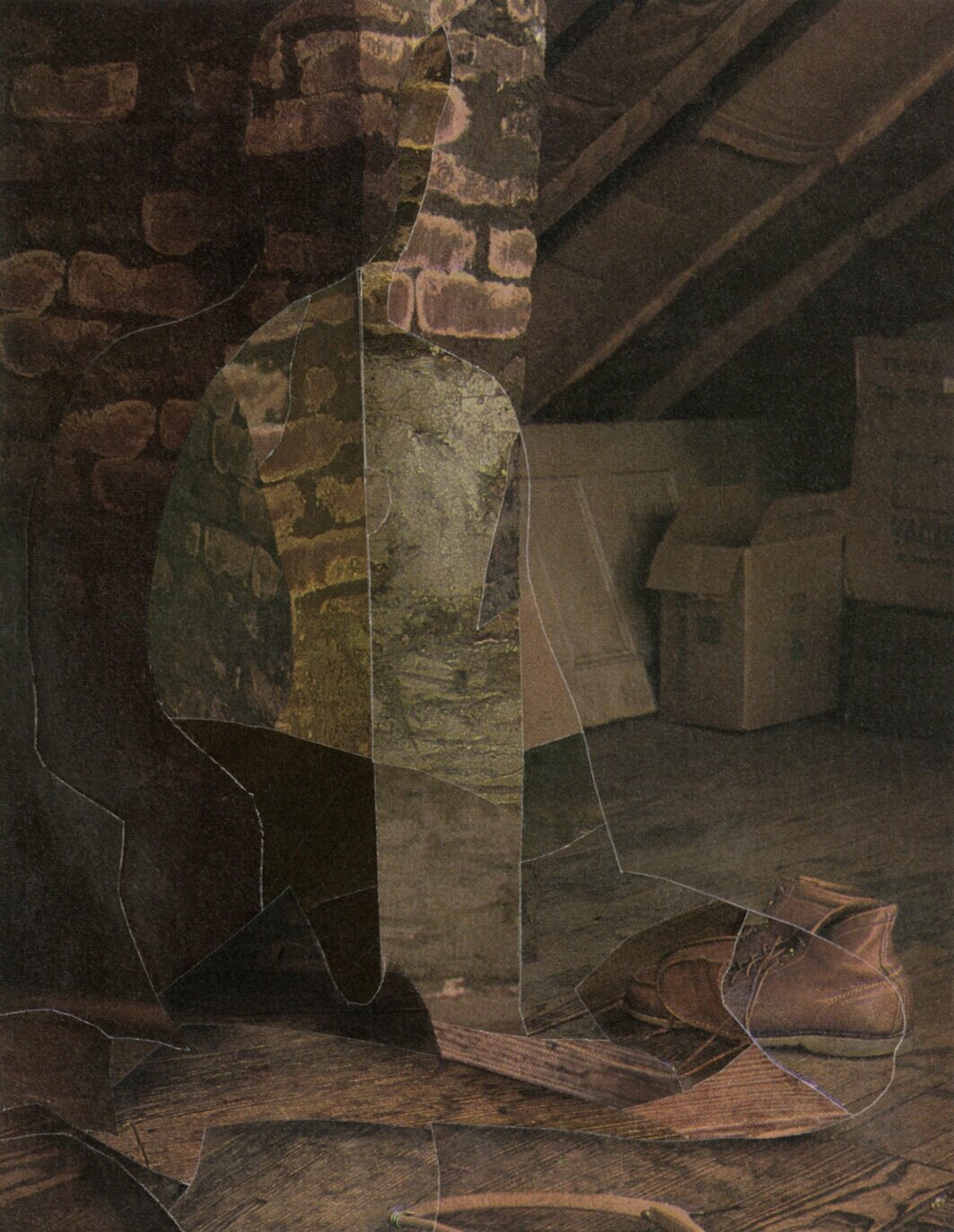
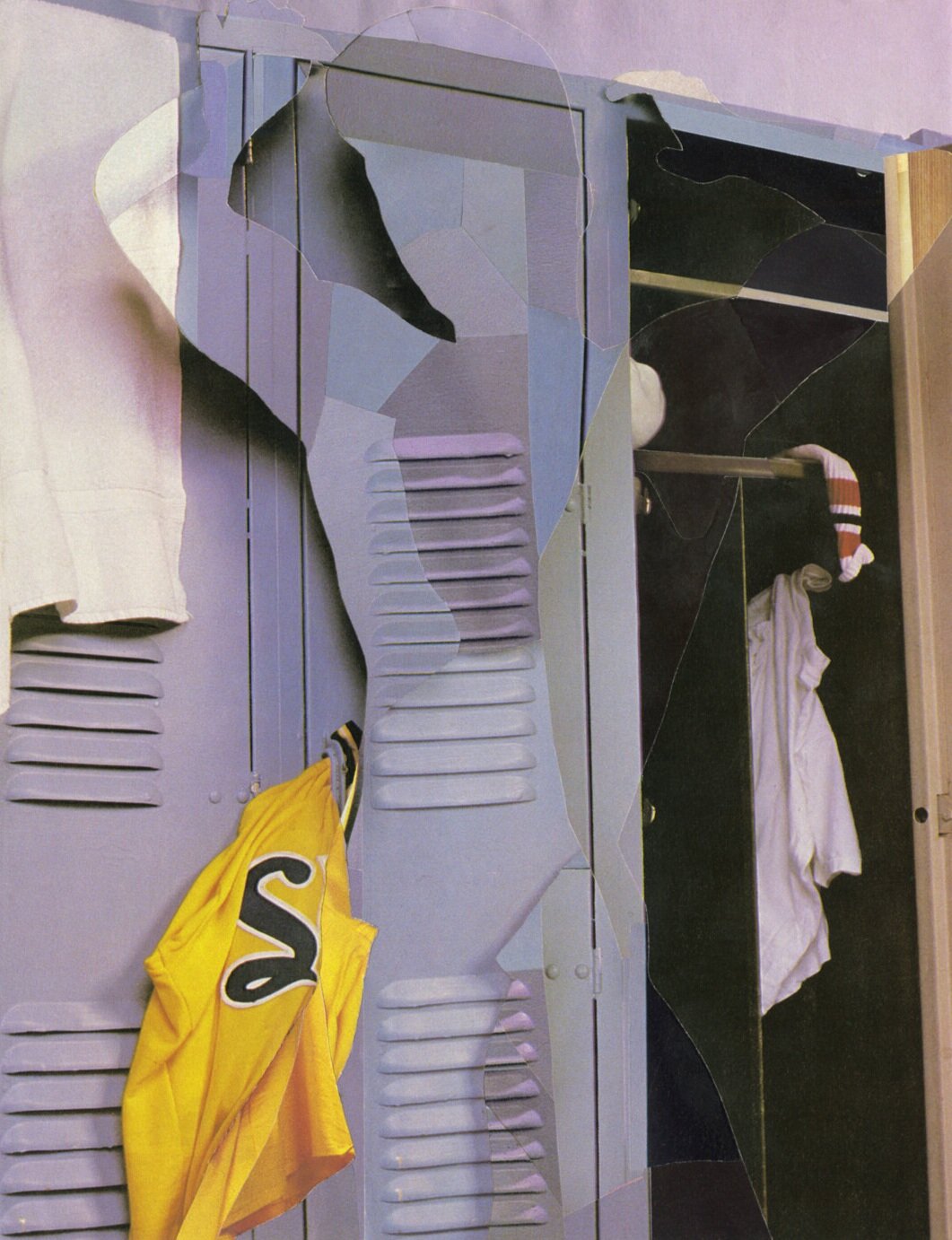




Caleb Cole
To Be Seen
Caleb Cole’s To Be Seen, a collection of photographs, collages, small sculptures, installations, and mixed media pieces explores the difference, the sameness, and the overlapping meanings of masculine and feminine. If one is masculine, the implication is that one cannot be vulnerable. Men and women, by adhering to a narrow definition of their masculinity or femininity are limited in emotions and experiences…to say someone plays like a girl is demeaning, implies a less than value. To Be Seen encourages the viewer to embrace a full range of emotions and not shut off to feelings or characteristics because of their labels, but to accept and welcome them as human.
The work in To Be Seen questions men’s and my own relationship with femininity, as well as the ways that beauty is gendered and which bodies have access to it. When femininity’s value is dismissed, characterized as frivolous, artificial, weak, manipulative, and irrational, not only does this serve to disempower women, but everyone suffers. By denying their own feminine inclinations, men lose out on the full range of emotions and experiences available to them, which can result in isolation, shame, and rage. To Be Seen is not only about this loss, but about drawing from the strength of femmes of all genders across history and seeking to retain the joy in queerness, transness, and femininity. - Caleb Cole
We must rightly recognize that feminine expression is strong, daring, and brave […] In a world awash in antifeminine sentiment, we understand that embracing and empowering femininity can potentially be one of the most transformative and revolutionary acts imaginable. -Julia Serano, Whipping Girl

